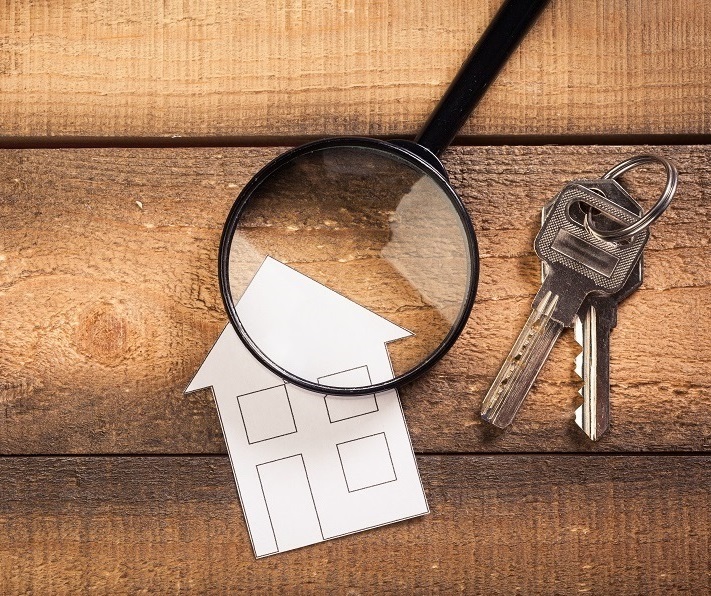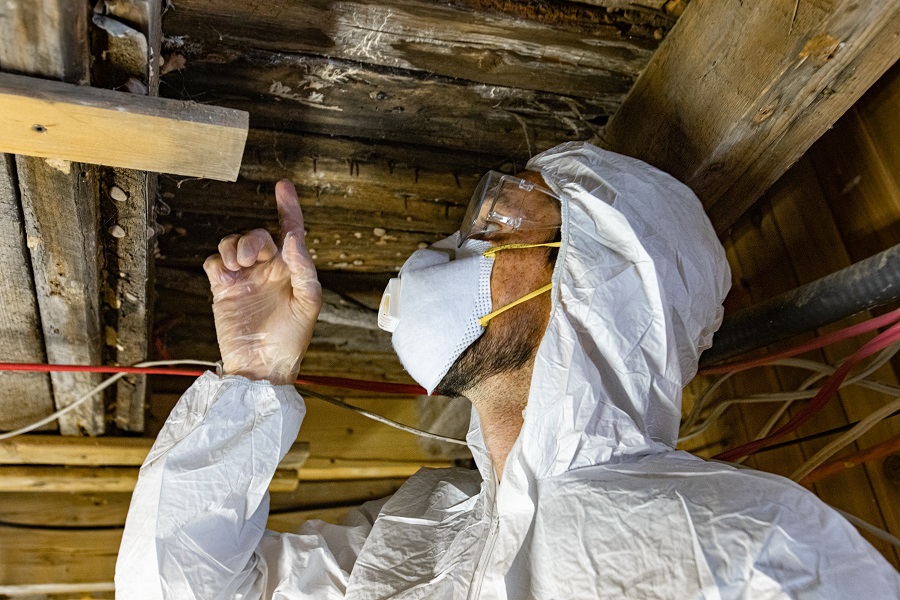What is dry rot?
Dry rot is the general word used for wood-decay fungus. Once the surface of the Wood is broken down by the Sporocarp fungi, it gives way to Mycelium that consumes the wood and dries it out effectively; the end result is a fine dust and dry rot bloom. Dry rot is caused by fungal spores which require a suitable place to land and start their colonies before spreading through the underlying wood. Soil can be contaminated when it is drilled into, and old wood that has been affected by dry rot could also be a source of contamination.
This means wood can get damp and stay damp for considerable periods of time below 15% relative humidity. Dry rot attacks the structural parts of a property such as floor joists and rafters undetected, unlike wet rot which can only attack damp timber. It often happens where you don’t look. This can be behind the plaster, under your floorboards or even in your loft. That’s why it’s important to identify the signs and symptoms of dry rot to have it treated fast.
What is the difference between dry rot and wet rot?

Dry Rot Treatment and Services
What are the causes of dry rot?
Dry rot is caused by different species of fungi. Serpula Lacrymans is the most common one in London. If it’s not handled fast enough, it’s going to spread over your house, brick and mortar, and even plaster. Blocking up your timber may save on heating/cooling costs, but it may also affect the structural integrity of your entire house. Dry rot hits when you have too much moisture in your timber. This attracts the fungus that is going to use this moisture to produce nutrients. The expression “dry rot” is used to contrast between “wet wood” and “dry wood rot.”
Wet timber feeds on dry rot. Fungal spores require over 30% moisture to generate hyphae, which in turn can survive with 20% moisture. They are the only living organism that can form three-dimensional networks of hyphae, which can lead to mycelia that spread over considerable distances. H2O, Hemicellulose and cellulose can be stripped from the timber by this fungus, leaving behind a fragile structure of the original wood. A specialist survey will be needed, this specialist survey can help you identify the fungus that is causing your timber decay. This is really important since the cure for these damages can differ based on the actual cause.
The dangers of dry rot in London
Dry Rot Effect on your Property
The biggest problem with dry rot is that it will rapidly attack your home’s structural integrity. It will spread along the structural timbers inside your property and begin to break them down. In serious cases, this can trigger various parts of your house to break apart. Dry rot, however, does not attack your brick or stone; it only travels across it. That is why routine checks are necessary.
Dry Rot is a critical problem that requires urgent maintenance and treatment. You should call a dry rot expert immediately to avoid further infestation and damage. If you suspect you may have a problem with dry rot, check out Southern Damp Proofing today.
What are the Warning Signs of Dry Rot?
The sooner you find dry rot, the less time and money you need to waste on treating it. A full assessment by a professional is recommended if you experience any of the following signs and symptoms.
The beginning of the dry rot cycle
The spores of the dry rot fungus are carried by the wind across large distances. They only need a small place to come inside and will slowly but surely chew holes through the wood. When the wood has enough moisture, it allows fungal spores of Armillaria mellea to germinate and create hyphae, if the timber is giving them enough nutrients to do so. As the fungus grows, strands of this tissue called hyphae form spiderweb-looking collections called mycelium. Mycelium ranges in different colors such as light gray or solid white. Mycelium is mostly found between property’s bricks, mortar and plaster and can also try and spread into timber greatly.
Your timber is damaged.
It affects every part of the wood, from the bark to the core, causing it to wither and die. Often this can also cause the timber to collapse. The first sign of dry rot is darkening of the wood. In fact, dry rot can result in what is called cuboid cracking. Cuboidal cracking occurs when the wood breaks into cubes that are about 50 mm in width. The distinctive symptom of white rot in wood is a creamy colour to the wood due to a white fungal growth called “hyphae”. Also known as dry rot, hyphae is a common symptom of dry rot.
Damp Proofing Can Help Prevent
- Rising / Penetrating Damp
- Ingress of Water
- Salt Crystallization
- Plaster Breakdown
- Damp Staining
- Wet Rot / Dry Rot
Contact Southern Damp Proofing Now to Speak With an Expert
Dry Rot Treatment in London
Only when the moisture is over 20% will a dry rot invasion take place. Controlling moisture levels in your living space/property is the first preventative step to eradicating the presence of the fungus. Then the moisture levels will be under your control. Consult a professional for a proper treatment of your dry rot.

Your timber may require Boron roads injection from a professional. It’s a well known fact that Boron is a lethal material, that’s why we always make sure all of our damp proofing experts wear the right safety clothing. Due to their specialist experience and thorough inspection, our damp experts will be able to identify and address any damage that dry rot may have caused in your home. Dry rots can lead to serious complications if left untreated for a long time. Dry rots are a serious problem and can lead to serious issues if left untreated. Our team at Southern Damp Proofing will implement a suitable treatment that addresses your problem efficiently and cost-effectively. Please don’t be late If you believe you have a problem with dry rot, call 020 7971 1329 for a free survey, and successful care today.
How can you prevent dry rot damage in London?
The first step of treating dry rot is prevention. A dry rot infestation will occur in any wooden areas of the house that traps ample water and is subject to moisture/moisture ingress. Here are several techniques that will save them from forming: Always ensure there are no leaks in your property. Provide proper, sufficient ventilation.
Correctly ventilate the attic and insulate it. Ventilate crawl spaces correctly. Stop dirt and moisture from getting into your basement or crawlspace. Examine all areas of the roof and wall surrounding the chimney from top to bottom, ensuring that water is being directed away from the chimney properly. Ensure clear downspouts and drains. Using a wet system? Check for plumbing and heating leaks in your home. The easiest way to mitigate the chance of dry rot is to decrease moisture levels, because of the moist conditions needed for dry rot fungus to feed and germinate. For instance, if you plug the leak, you prevent water from flowing into the pipe and causing future damage.

Dry rot is caused by moisture getting into the wood, it is important to contact us right away because dry rot can spread quickly. Southern Damp Proofing will be able to help you no matter what the nature of your damp issue is, email or call us on 020 7971 1329
FAQ’s
Where can dry rot grow?
How can I confirm that I have dry rot?
Is dry rot serious?
If dry rot is left unchecked what will happen?
Will dry rot stretch?
How wide is Dry Rot able to spread?
How do I discover how far Dry Rot has spread?
Can my dry rot problem be treated effectively by you?
Should I restore or replace dry rot?
For Top Quality Damp Surveys & Treatments
Other Areas We Cover
- Dry Rot Treatment in Tonbridge-Tunbridge, Kent
- Dry Rot Treatment in Tonbridge, Kent
- Dry Rot Treatment in West-Malling, Kent
- Dry Rot Treatment in Westerham, Kent
- Dry Rot Treatment in Whitstable, Kent
- Dry Rot Treatment in Acton, London
- Dry Rot Treatment in Barking, London
- Dry Rot Treatment in Barnes, London
- Dry Rot Treatment in Barnet, London
- Dry Rot Treatment in Battersea, London